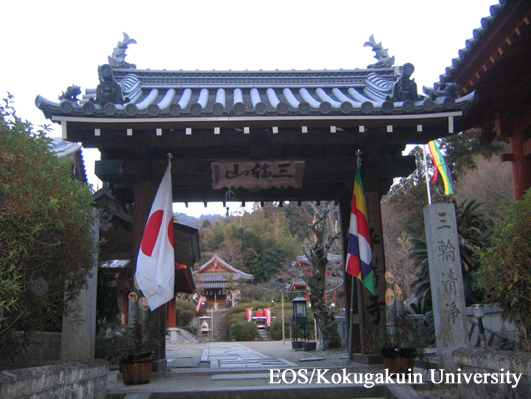- トップ
- Encyclopedia of Shinto
- Miwa-ryū Shintō
Encyclopedia of Shinto
| Main Menu: | |
| Links: |
詳細表示 (Complete Article)
| カテゴリー1: | 8. Schools, Groups, and Personalities |
|---|---|
| カテゴリー2: | Medieval and Early Modern Schools |
| Title | Miwa-ryū Shintō |
| Text | A form of Shinto belonging to the tradition of Ryōbu Shintō that developed primarily at Byōdōji and Ōgorinji (Ōmiwadera), temples serving as the "parish temples" (jingūji) of Ōmiwa Shrine in Nara Prefecture. The founder of Byōdōji, Kyōen (also read Keien, 1140-1223) is usually considered the creator of Miwa-ryū Shintō. However, while the Miwa Shōnin gyōjō, his only certain biography, does mention a few events related to the kami, it contains no indications that Kyōen established a clearly defined form of Shintō. Thus, scholars suggest that Miwa-ryū Shintō actually arose later in history. It is not clear to what extent this form of Shintō had existed during Kyōen's lifetime, but from the fact the Miwaryū jingi kanjō shi ki was copied in 1266, we know that the tradition had been developing since at least the mid-Kamakura period. However, the existence of Miwa-ryū Shintō at Miwa can be clearly attested only from the time of the reconstruction of the Ōgorinji (Ōmiwadera) —the original jingūji of Miwa shrine— by Eison (1203-1290); subsequently, Miwa Shintō developed there thanks to the efforts of Eison and members of his order (Saidaiji-ryū). The Saidaiji-ryū order also played an important role in the development of Ryōbu Shintō at Ise after Eison's pilgrimage to the Grand Shrines of Ise; it is thus likely that Eison's monastic order was responsible for a massive introduction of Ryōbu Shintō to Miwa. Among the early texts of Miwa-ryū Shintō is the Miwa Daimyōjin engi composed in 1318. It states that the kami of Ōmiwa is identical in essence to Amaterasu, thus attempting a fusion with the doctrines of Shinto practiced at Ise. Subsequently, the transmission of Miwa-ryū Shintō occurred especially at Byōdōji and Ōgorinji. Since the Kanekuni hyakushu uta shō (composed in 1486) mentions the Shinto of "Miwa Kyōen Shōnin" as one of the "four Shinto traditions" (shintō shiryū), we can assume that its existence was widely known by the mid-Muromachi period. Nevertheless, most Miwa-ryū texts existing today date from the Edo period, and many of them show the influence of Yoshida Shintō; as a result, we know little about the actual aspect of this tradition during the medieval period. However, with the publication of the Miwa sōsho and, more recently, of Miwa-ryū texts in the Ōmiwa jinja shiryō collection (vols. 5, 6, and 10), many primary sources have become more easily accessible. Further, studies such as Miwa-ryū Shintō no kenkyū, edited by the Ōmiwa Shrine, have also begun to appear, and we can expect new developments in research on this tradition in the near future. Itō Satoshi |




